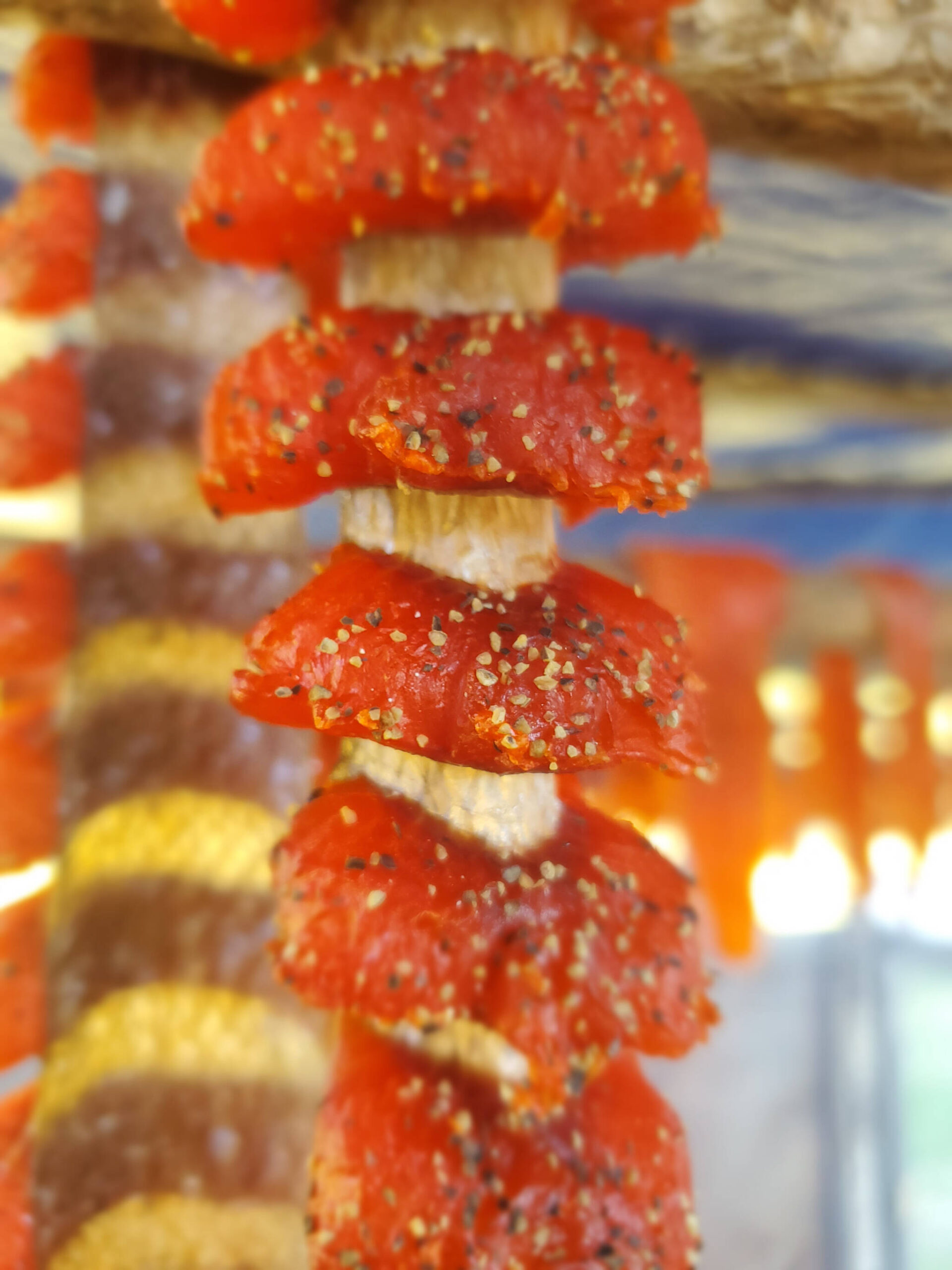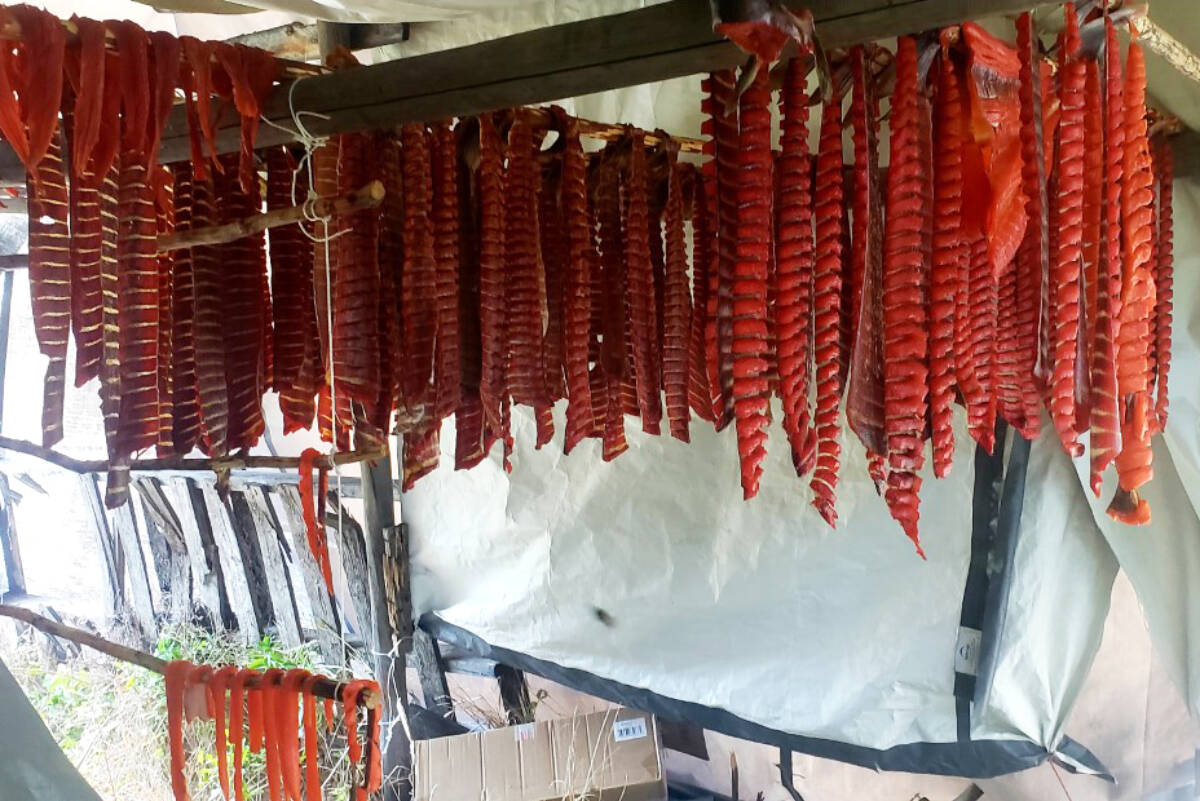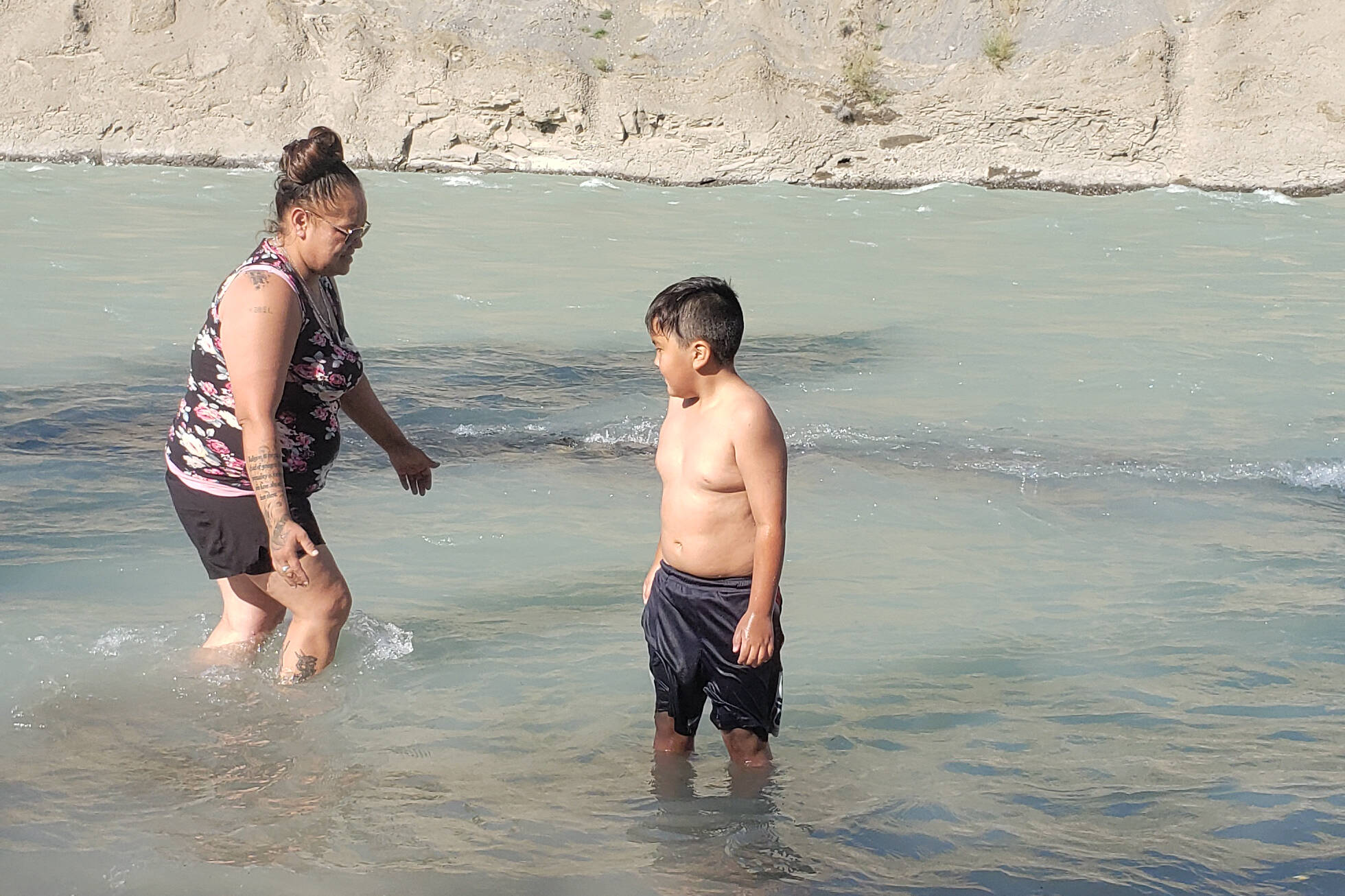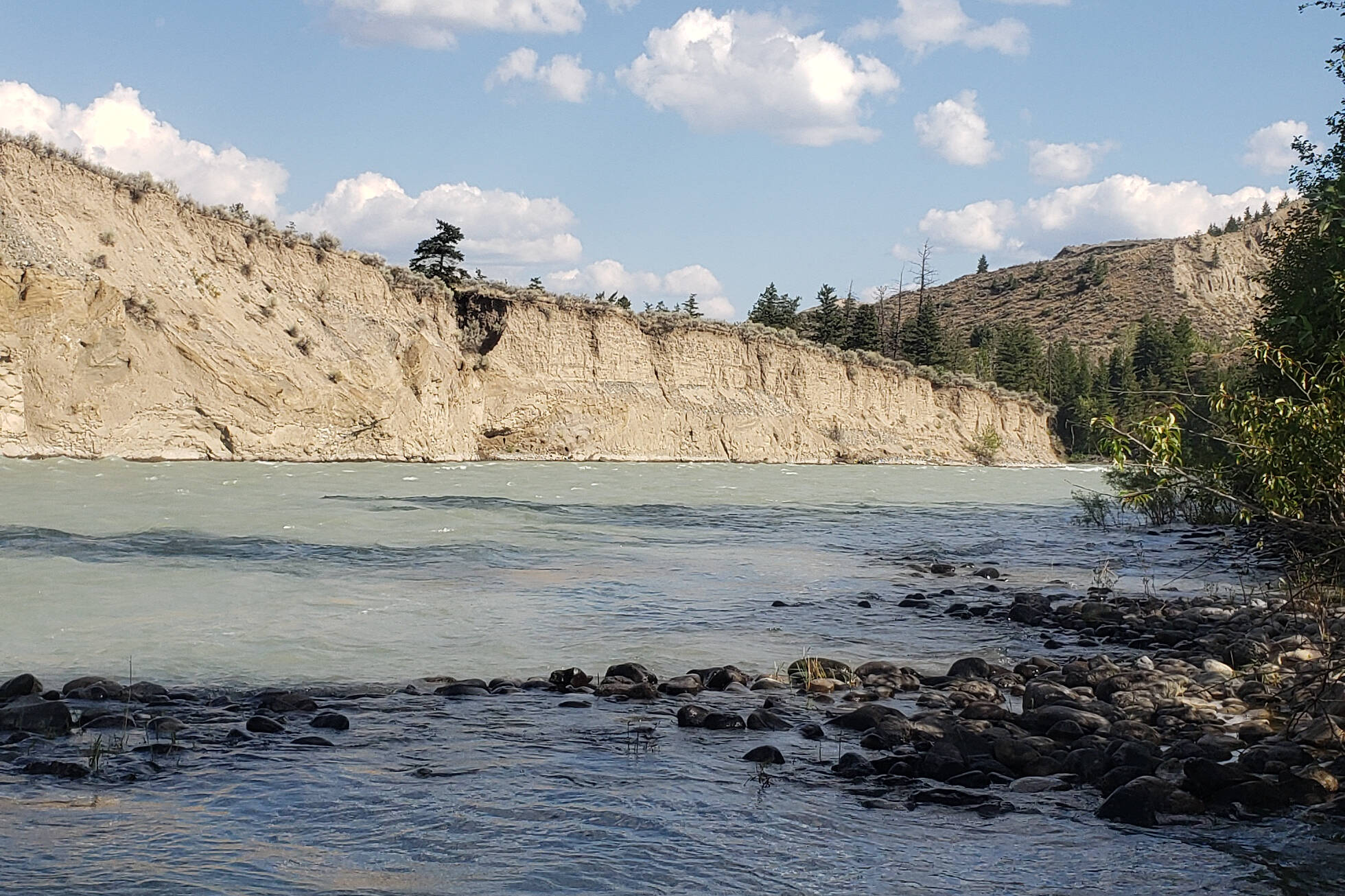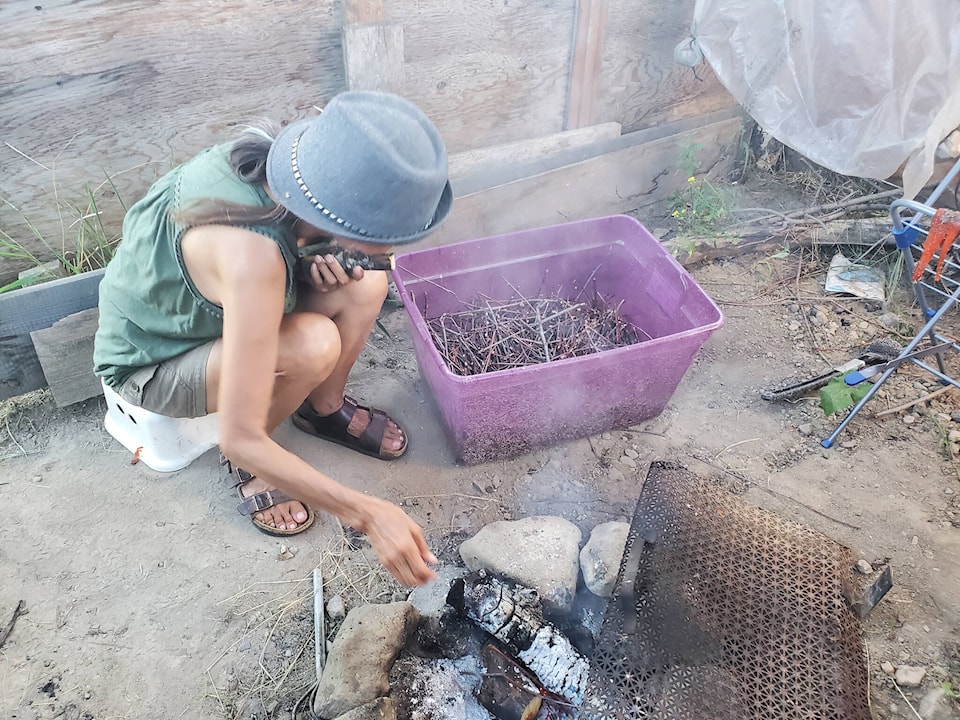Helen Sandy and Mary Tenale have childhood memories that resurface each time they smoke salmon.
This summer the sockeye salmon was abundant and both women were given fish after it was freshly caught from the Chilcotin River at Farwell Canyon west of Williams Lake.
Helen is from T’exelc First Nation and was the 12th of 13th children born to her mother, Anastasia Sandy.
Whenever Anastasia was given some fish she would get to work early in the morning around 5 a.m., doing the gutting and cleaning.
“Mom would chase us out of bed about 6:30 telling us to get out there and I had to keep the smokehouse fire going. The older ones would help gut and clean the fish.”
Today Sandy is one of a few people smoking salmon in her community but recalls growing up how every household did.
“There was no welfare or family allowance then.”
Helen cannot camp anymore because it is painful on her body, but there was a time she did and processed 40 to 45 fish a day.
“The most I can do in a day now is 10, but when I am doing it, it is all my brain is focused on.”
As she squatted down to feed her smokehouse fire with Saskatoon branches, half dried cottonwood and some green cottonwood she said she works to build a good coal system underneath.
She’ll flip the salmon strips four our five times and later take them inside the house and place them on a rack.
Two weeks of her summer is dedicated to the process if she’s lucky to get the fish, she added.
Mary is from Tl’esqox First Nation and as a child accompanied her mom Harriet Hurst and stepdad Willie Hurst to Farwell during salmon season.
“My stepdad said when there was dry lightning it was lighting the way for the salmon. He also said if you could hear crickets that meant lots of fish. There were both of those things this year.”
Tl’esqox hired Norm Diablo to fish for the community and Mary, with help from her children and grandchildren, was busy gutting, cutting and smoking 94 salmon at her Farwell camp.
“My kids and other reserve children come down to help.”
Similar to Helen, Mary does the Lillooet style. She keeps her knife sharp with a sharpening stone she brings with her.
“I like to open the bellies up so they don’t get sour. There is so much fat that you have to keep working it.”
After the fish has two or three days of good smoke then she lets it dry for a few more days.
“We cannot depend on anyone else to do it for us,” Mary said. “We like to share it out and keep some for ourselves.”
READ MORE: Sockeye salmon return to Williams Lake
monica.lamb-yorski@wltribune.com
Like us on Facebook and follow us on Twitter
